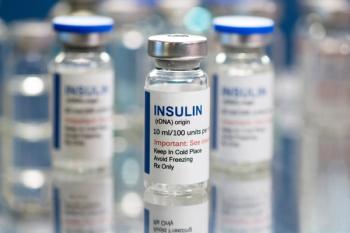
Proposed Changes of USP <797> Strengthens Documentation Requirements
Once the revisions to <797> become approved, there will be a minimum grace period of 6 months for pharmacies to comply.
In a presentation at the
Currently, sterile compounding includes didactic training with a quiz, initial glove fingertip samples that must be performed 3 times in a row without growing any bacteria, a media fill test that mimics the most strenuous process, and an observed competency test, which will include hand-hygiene and garbing, aseptic technique, cleaning, and disinfecting. For low- and medium-risk compounders, these tests are annually and for high-risk compounders, it is every 6 months.
Additionally, for antiseptic hand cleaning, Jensen said that individuals often forget to clean under their fingernails.
“We're usually pretty good about aseptic hand cleansing and disinfection of compounding surfaces, which we have a checklist for those,” Jensen said in the presentation. “The number 1 plan of correction that I write for sterile pharmacies is on hand washing. The things that we take for granted are the things that the regulators are hyper focused on. The specific part of that hand washing, that I write these corrective actions for, is cleaning the fingernails under running water.”
She also said to select appropriate protective garb, which should not be touched from the outside and should not touch the floor when an individual puts it on. Current practices also include maintaining or achieving the sterility of CSPs and personal protective equipment. Compounding environments should be safe from contamination by radioactive, cytotoxic, and chemotoxic drugs.
Additionally, Jensen discussed identifying ingredients and maintaining sterile products aseptically, sterilize high-risk CSPs, and label and quality inspect CSPs.
“It tells us we're going to identify training, identifying, weighing, and measuring ingredients. This is often lacking for those high-risk compounders. Documentation on the training is often lacking,” Jensen said in the presentation.
The current chapter also said that individuals need to be trained on the principles of filtering, unidirectional airflow. Additionally, all personnel who compound hazardous drugs must be fully trained on storage, handling, and disposing, including each piece of equipment.
Furthermore, all individuals must confirm in writing that they understand the risk of handling hazardous drugs, including reproductive capability. Individuals must be trained in surface cleaning, disinfection sampling, and assessment.
Jensen also noted that for this chapter, documentation of everything is key.
As for proposed changes to USP <797>, the handling of hazardous drugs will be moved to USP <800>. Additionally, it does not directly call out identifying, weighing, labeling, or quality inspection of hazardous drugs, though it is all mentioned indirectly.
For those changes not included in the current chapter, the proposed changes include training on calculations, training on mixing, achieving apyrogenicity, having documentation of CMPD processes, the movement of materials, and it requires more of a standard of practice documentation.
Additionally, the proposed chapter includes a master formula record (MFR) that includes the name, strength, and dosage form of the drug, all ingredients, type and size of container closure systems, beyond use dates (BUD) and storage requirements, quality control procedures, and other information essential for compounding the drug.
For the proposed chapter, training is annual for all categories, with media fill training occurring every 6 months. For compounders that deal with category 3 drugs, media fill training is every 3 months.
For cleaning and disinfection training, the test should occur every 12 months.
Other changes include the use of categories to describe the drugs, instead of the use of high-, medium-, and low-risk. Each drug is categorized by environment and BUD.
Category 1 includes drugs compounded in a non-classified area with a BUD of 12 hours or less at room temperature of 24 hours when cold. Category 2 includes longer BUDs, but it has to be compounded in a clean room setup, such as a hazardous negative buffer room. Category 3 drugs have strict guidelines of where they should be compounded, but also have longer BUDs.
Jensen noted that these proposed changes could also be revised again before they are finalized.
Reference
Jensen B. How does the proposed revision of USP <797> affect the training and competency evaluation of sterile compounders?. Raleigh-Durham, NC: AAPT 2022 Annual Pharmacy Technician Convention; July 22, 2022.
Newsletter
Stay informed on drug updates, treatment guidelines, and pharmacy practice trends—subscribe to Pharmacy Times for weekly clinical insights.












































































































































































































